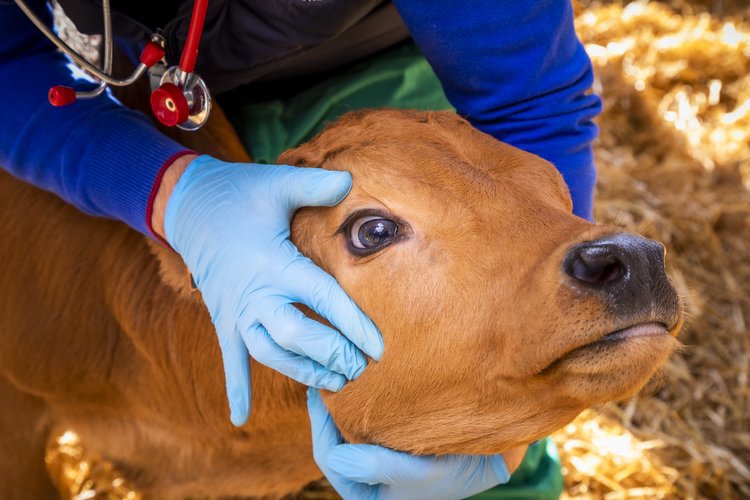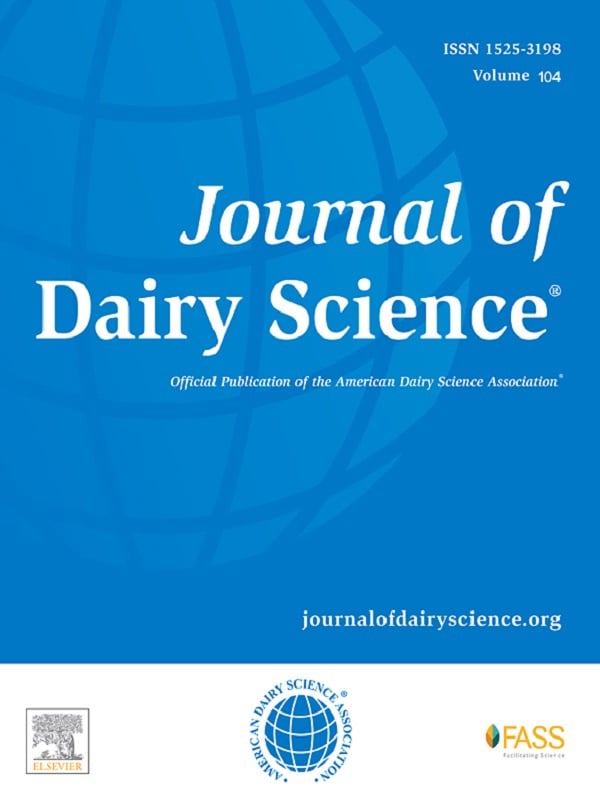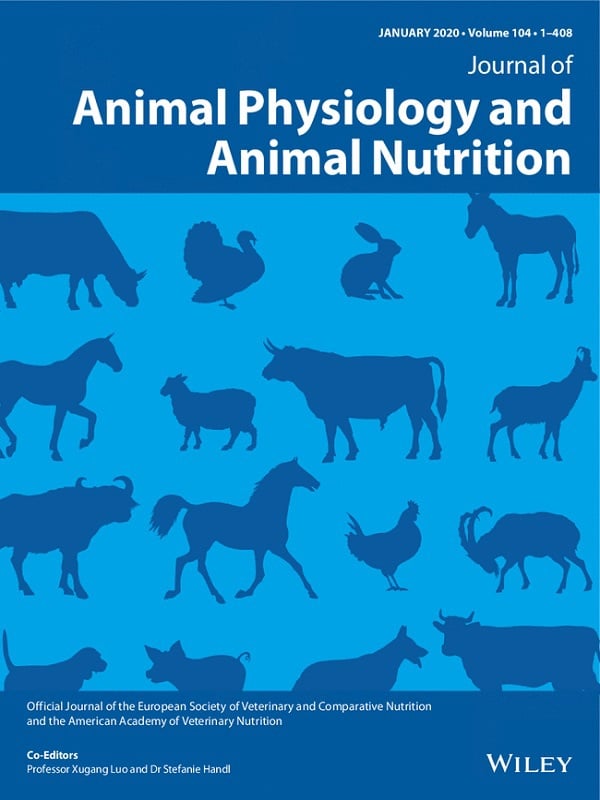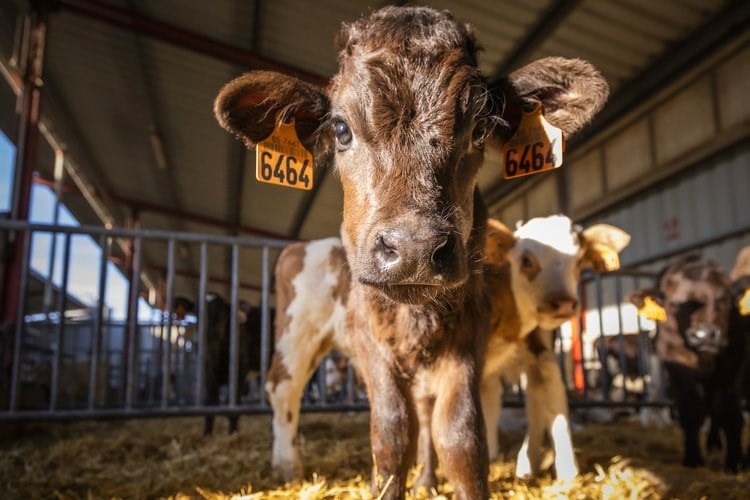
You are visiting the global website
Switch to
Stay on

Calves
Pure and cross breed calves originating from dairy operations make up a significant percentage of global beef production. Optimised health and nutritional practices during their rearing period play an important role in enhancing performance and minimising the need for continual antibiotic treatments in future growing and fattening phases. Trouw Nutrition is dedicated to supporting calf rearers with our integrated programmes, calf milk replacers, and solutions.
Related stories
-
 A major goal in treatment of calves with diarrhea is to restore hydration and to correct metabolic acidosis. This can be achieved by the administration of oral electrolyte solutions (OES). However, the composition of OES products and the administration protocols in practice vary widely, which can potentially compromise the efficacy and safety of these treatments. In particular, administration of OES in milk replacer (MR) and the absence of water supply in young calves are not unusual and these conditions could compromise calf health. In this light, the objective of this study was to evaluate the efficacy and safety of OES administered in MR and in water without access to water. Forty-five male Holstein calves (16.6 ± 1.6 d of age and 45.4 ± 2.2 kg at arrival) were purchased from a collection center located in the Netherlands. After arrival, calves went through an adaptation period of 4 d. Calves that developed diarrhea within 6 d after the end of the adaptation period were enrolled in the study, and the remaining calves were sold after being weaned. Upon morning detection of abnormal fecal scores (d 1 starting point), calves were blocked based on initial BW. Within each block, calves were randomly assigned to 1 of 2 treatments, including a control consisting of a small dose of whey (CON; n = 12) and an OES treatment (OES; n = 14). Treatments were blinded to the farm staff by randomly assigning a letter to each treatment. Treatments were simultaneously administered for 4 d in MR (2.5 L at 0800 and 1730 h) and in water (3 L at 1300 and 2200 h). Calves had no supplemental access to plain water. Blood samples were taken at 0600 h for 4 d, and fecal scores (0 = normal; 1 = watery feces) were assessed daily at 0900 h for 15 consecutive days. Additionally, skin turgor and degree of enophthalmos were assessed at 1000 h from d 1 to 4 using a 3-level scoring system. Calves fed OES had a higher prevalence of diarrhea on d 3, 4, and 5 as well as higher prevalence of delayed skin turgor and increased degree of enophthalmos over the 4 monitoring days. Diarrhea duration was longer in calves receiving OES than in calves receiving CON (4.2 d vs. 2.1 d, respectively). The OES treatment resulted in hypernatremia (serum Na+ >145 mmol/L) within 48 h after the first OES administration. Hypernatremia was linked with higher serum Cl− and urea concentrations and thus higher serum osmolarity in OES calves compared with CON calves. Administered under these conditions, OES resulted in various degrees of hypernatremia and a delayed recovery from diarrhea, thus defeating the purpose of OES administration.
A major goal in treatment of calves with diarrhea is to restore hydration and to correct metabolic acidosis. This can be achieved by the administration of oral electrolyte solutions (OES). However, the composition of OES products and the administration protocols in practice vary widely, which can potentially compromise the efficacy and safety of these treatments. In particular, administration of OES in milk replacer (MR) and the absence of water supply in young calves are not unusual and these conditions could compromise calf health. In this light, the objective of this study was to evaluate the efficacy and safety of OES administered in MR and in water without access to water. Forty-five male Holstein calves (16.6 ± 1.6 d of age and 45.4 ± 2.2 kg at arrival) were purchased from a collection center located in the Netherlands. After arrival, calves went through an adaptation period of 4 d. Calves that developed diarrhea within 6 d after the end of the adaptation period were enrolled in the study, and the remaining calves were sold after being weaned. Upon morning detection of abnormal fecal scores (d 1 starting point), calves were blocked based on initial BW. Within each block, calves were randomly assigned to 1 of 2 treatments, including a control consisting of a small dose of whey (CON; n = 12) and an OES treatment (OES; n = 14). Treatments were blinded to the farm staff by randomly assigning a letter to each treatment. Treatments were simultaneously administered for 4 d in MR (2.5 L at 0800 and 1730 h) and in water (3 L at 1300 and 2200 h). Calves had no supplemental access to plain water. Blood samples were taken at 0600 h for 4 d, and fecal scores (0 = normal; 1 = watery feces) were assessed daily at 0900 h for 15 consecutive days. Additionally, skin turgor and degree of enophthalmos were assessed at 1000 h from d 1 to 4 using a 3-level scoring system. Calves fed OES had a higher prevalence of diarrhea on d 3, 4, and 5 as well as higher prevalence of delayed skin turgor and increased degree of enophthalmos over the 4 monitoring days. Diarrhea duration was longer in calves receiving OES than in calves receiving CON (4.2 d vs. 2.1 d, respectively). The OES treatment resulted in hypernatremia (serum Na+ >145 mmol/L) within 48 h after the first OES administration. Hypernatremia was linked with higher serum Cl− and urea concentrations and thus higher serum osmolarity in OES calves compared with CON calves. Administered under these conditions, OES resulted in various degrees of hypernatremia and a delayed recovery from diarrhea, thus defeating the purpose of OES administration.by J. N. Wilms on Read more about this topic -
-
 Recommendations for composition of oral rehydration solutions (ORS) for calves, particularly concerning Na+, glucose, and their combined effect on tonicity, are not in line with guidelines for humans. Thus, this study aimed to determine the effect of ORS tonicity on water, mineral and acid–base balance. Seventy‐two calves were selected based on the severity of dehydration and blood base excess (BE) on day 0. Five calves that did not develop diarrhoea were removed post‐inclusion from the study. Calves were allocated to blocks of four animals based on blood BE on day 1. Within each block, calves were randomly assigned to one of four treatments: (a) hypotonic ORS with low Na+ and lactose (HYPO); (b) isotonic ORS with low Na+and glucose (ISO); (c) hypertonic ORS with high Na+ and glucose (HYPER); and (d) control consisting of warm water including 5 g/L of whey powder (CON). Treatments were administered twice daily over a 3‐day period, in which calves were offered 2.0 L of treatment at 1300 and 2100 hr. Calves were fed 2.5 L of milk replacer at 0700 and 1630 hr from day 1 to 3 and 3.0 L from day 4 to 5, and had access to water. Calves were monitored for 5 days in which measurements included intakes, BW, blood sampling and collection of faeces on day 1 and urine from day 1 to 3. All ORS treatments maintained normal serum Na+, whereas CON did not. Calves in the HYPER group had lower blood pH and greater faecal Na+ losses than HYPO and ISO. Plasma expansion relative to baseline was higher in low tonicity ORS (+4.8%) when compared with CON (+1.0%). Urine osmolality was 30% higher in HYPER calves. In this experiment, low tonicity ORS were more effective at restoring water, mineral and acid–base balance than the hypertonic ORS.
Recommendations for composition of oral rehydration solutions (ORS) for calves, particularly concerning Na+, glucose, and their combined effect on tonicity, are not in line with guidelines for humans. Thus, this study aimed to determine the effect of ORS tonicity on water, mineral and acid–base balance. Seventy‐two calves were selected based on the severity of dehydration and blood base excess (BE) on day 0. Five calves that did not develop diarrhoea were removed post‐inclusion from the study. Calves were allocated to blocks of four animals based on blood BE on day 1. Within each block, calves were randomly assigned to one of four treatments: (a) hypotonic ORS with low Na+ and lactose (HYPO); (b) isotonic ORS with low Na+and glucose (ISO); (c) hypertonic ORS with high Na+ and glucose (HYPER); and (d) control consisting of warm water including 5 g/L of whey powder (CON). Treatments were administered twice daily over a 3‐day period, in which calves were offered 2.0 L of treatment at 1300 and 2100 hr. Calves were fed 2.5 L of milk replacer at 0700 and 1630 hr from day 1 to 3 and 3.0 L from day 4 to 5, and had access to water. Calves were monitored for 5 days in which measurements included intakes, BW, blood sampling and collection of faeces on day 1 and urine from day 1 to 3. All ORS treatments maintained normal serum Na+, whereas CON did not. Calves in the HYPER group had lower blood pH and greater faecal Na+ losses than HYPO and ISO. Plasma expansion relative to baseline was higher in low tonicity ORS (+4.8%) when compared with CON (+1.0%). Urine osmolality was 30% higher in HYPER calves. In this experiment, low tonicity ORS were more effective at restoring water, mineral and acid–base balance than the hypertonic ORS.by J. N. Wilms on Read more about this topic -
